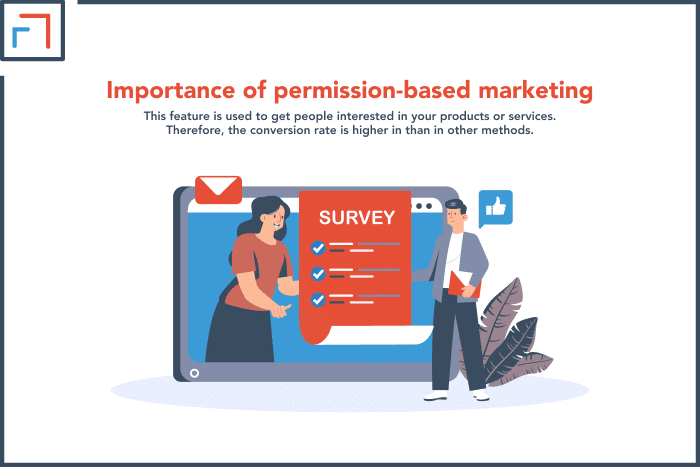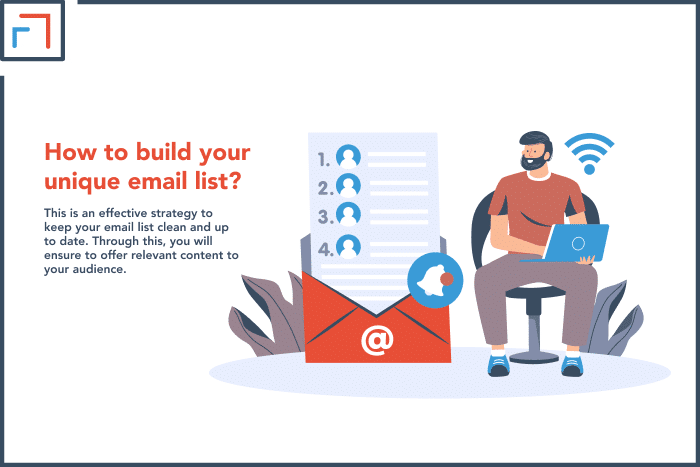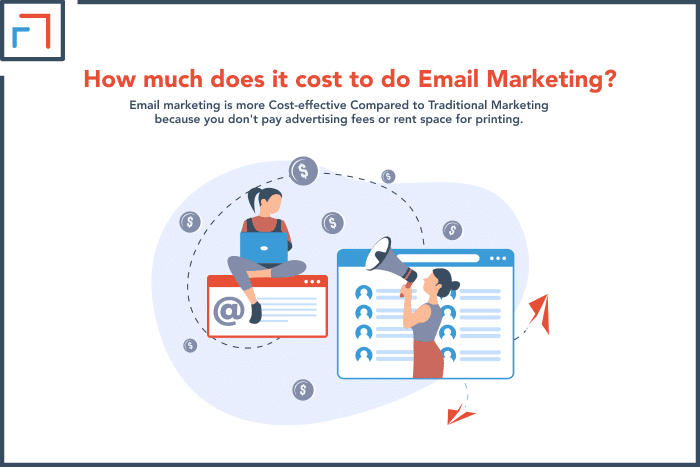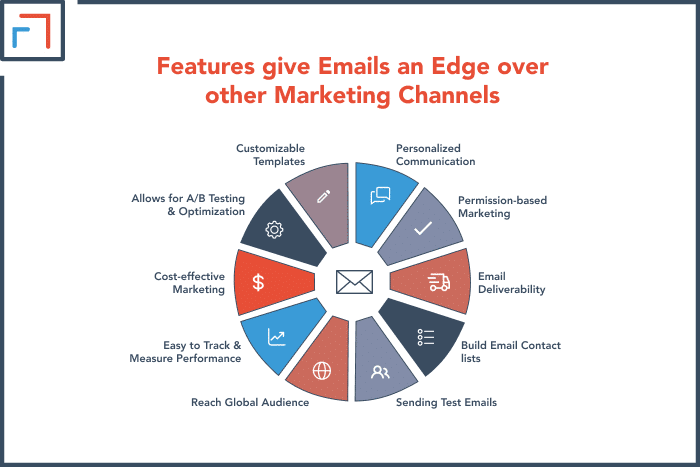Emails are unique compared to other types of marketing. Whether you are looking at the audience, process, reach, and design, the method is different. But what are the specific differences between email marketing and other marketing techniques?
Email marketing is different because it uses personalized communication and a permission-based approach. It is also easy to reach a global audience with a click, and the marketing method is cost-effective. You can also track and measure campaign performance. Lastly, you can use A/B testing.
That said, how can you use the uniqueness of email marketing to your advantage? This blog post will take you through each aspect and how to leverage it to your advantage. Let’s get started.
What Makes Email Marketing Different?
Whether you are starting or are an established business, here are different features that make email marketing different.
1. Personalized Communication
Before we get into details, let’s address a common misconception; personalization is addressing customers with their names. That is part of the puzzle but not the only aspect of personalization.
Personalized communication involves understanding and addressing your prospects’ pain points.
Email marketing helps you go beyond using names to tailoring the message with your targets’ preferences, behaviors, and needs.
Unlike other marketing methods like social media, search optimization, and paid ads, emails have a personal touch. This makes email marketing more effective in the following ways:
- Increasing customer engagement and response rate
- Fostering customer loyalty and repeat purchases
- Boosting brand perception and customer satisfaction
- Increasing profitability and revenue
But how does email marketing achieve all that? Let’s answer that question with another question. How do you feel when someone shows they care about your preferences, needs, or wants?
Valued, right? Customers are likely to stick around a brand that addresses them as individuals, understands their desires, and communicates with relevance.
Other platforms use generic messages hoping their content finds the right audience. This approach assumes a one-size-fits-all solution for customer problems.
But does it work like that? Although customers may have related needs, they have unique preferences, pain points, and communication styles.
Acknowledging the individuality of each customer will set you apart in a crowded market.
2. Permission-based Marketing
You don’t need permission to target potential clients through search or social media. This feature makes email marketing different from other marketing methods.
Different countries have strict email marketing opt-in and opt-out regulations.
I have written an article each on UK and Europe Email Marketing Laws and Email Marketing Laws for the US and Canada to help you know more about the same.
The CAN-SPAM Act, CASL laws, and PEC regulations require businesses to allow prospects to join and leave an email list voluntarily.
Although it might look negative for businesses, it has its positives. First, it means the people in your email list are interested in your products or services.
Therefore, the conversion rate is higher in email marketing than in other methods.
Permission-based marketing gives important insights into what interests your audience and what doesn’t appeal.
For example, if you send an email and the unsubscription rate shoots, you can tell that your message didn’t go well with your audience.
This doesn’t happen in mass marketing channels like social and traditional platforms. Many businesses have appreciated the importance of permission-based marketing.
You have probably seen that check button you click before sharing your contact details. When you click it, the marketing team can send you promotional, newsletter, discount, or informational emails.

3. Email Deliverability
The deliverability of emails is one of the primary advantages over other techniques. Traditional and social media marketing methods are like trying to shoot at a moving or random target.
The chance of missing is high, and you can even hit the wrong target. If you maintain a clean email list, you can expect a deliverability rate of over 90%.
This is because the process is not controlled by an algorithm, like in the case of social media. Aspects like frequency and number of followers affect the number you can reach through social media.
On the other hand, the delivery rate in email marketing is subject to technical aspects like spam filters and ESP guidelines. Email service providers also give reasons for the bounced emails.
This data is useful when sending subsequent emails because you know where to rectify. If you want to keep your email deliverability at optimum, you should:
- Weed out any inactive contacts in your list
- Allow voluntary subscription and unsubscription to your list
- Send using custom authentication to increase the deliverability rate
- Maintain a good reputation with your audience
- Avoid URL shorteners because they act as redirects
Email marketing gives you a higher deliverability to the target audience than other marketing techniques.
4. List Building
Your email list is like your phone contact list. This never happens in other marketing platforms. Although you can create buyer personas, you have no direct contact reference for each prospect or customer.
The feature gives email marketing a significant advantage compared to other methods. But how can you build an email list to use this unique email marketing feature?
- Create an engaging CTA on each page of your website to allow visitors to opt in
- Give welcome bonuses that entice potential customers to provide contact information
- Add sign-up buttons on your social media pages to allow your audience to join the list
Apart from signing up, you want to provide value to your audience. First, you need to segment the email list to ensure you offer relevant content to your audience.
This strategy also helps you track the customer journey and tailor your message and offers.
Another effective strategy is to keep your email list clean and up to date. You should regularly remove inactive and bounced emails to increase the deliverability and engagement rate.
Lastly, ensure it is easy to subscribe and unsubscribe from your email list. Through this, you will have only the interested contacts. And we need not say that this will be good for your business.

5. Test Emails
Unlike other marketing channels, emails allow you to test your message before sending it to your audience.
This feature has saved many marketers the embarrassment or even reputation that comes with unclear, erroneous, or horrendous communication.
Test emails are not to be confused with previews—common in social media marketing. The difference is that test emails give you the actual appearance of your message and format in your contact’s inbox.
When sending your test emails, you should focus on looking for the appearance of the subject line on all devices.
The subject line is the first point of interaction with your message; if it flops, you won’t achieve your objective.
Grammatical errors and typos are also common when sending marketing emails. But you can easily identify these errors through test emails.
Most emails have links which direct the audience to a website or other platforms. What happens when such links give 404 errors?
It can frustrate the receivers, which means a wasted click for your business. Confirming that all your links and buttons are directing customers to the right place does not harm.
Another part that people make mistakes is personalization. You don’t want to send emails with first names instead of second names in the salutations.
When you send a test email, you can see these errors before you dispatch the message to all your contacts.
6. Ability to Reach a Global Audience Instantly
Social media, paid adverts, and traditional marketing channels all have limitations when reaching a global audience. Email marketing is the best solution if you want to break these barriers.
As long as you have someone’s email address, it doesn’t matter where they are; you can get to them. This feature makes email marketing an ideal channel for businesses targeting a global audience.
Unlike social media, whose algorithms may target specific locations, emails will land in the targeted inbox, no matter the location.
Traditional marketing channels, like newspapers, radio, and television, are limited in reach. Some only work within a limited location.
When it comes to print media, it is not possible to target an audience that is far from your site because of the cost implication.
Email marketing allows you to send a message to thousands or millions of people who have subscribed to your list.
Apart from that, the message goes within seconds, no matter the location. And if the receiver has activated email notifications, they will get an alert instantly.
7. Easy to Track & Measure Performance
Almost all marketing channels allow you to track performance metrics. But how do you attach the numbers to particulars? Email marketing allows you to link contacts to specific metrics.
Through email marketing, you can tell who read your email, clicked which button, or didn’t open your email.
Through such personalized metrics, you can make tailored decisions about each prospect or customer. Through the data, you can tell:
- Who needs to be removed from the contact list
- Who are the most loyal customers
- Which clicks are appealing to your customers
- When is someone more likely to open your emails
- Who is likely to buy your products or services
Another primary benefit of personalized metrics is segmentation. Through the data, you can group your contacts into different categories.
This process helps you to send relevant messages to your audience. Consequently, you can increase engagement and conversion rates.
Apart from that, attaching data or actions to specific contacts is essential for automation.
Email automation tools can detect when someone takes a certain action that triggers further actions or responses.
8. Cost-effective Compared to Traditional Marketing
Email marketing has lower costs than other marketing methods because you don’t pay advertising fees or rent space for printing.
You can get as much as $40 for every dollar you spend on email marketing. The return on investment for email marketing makes it the best option.
If you have to pay a content writer, the size of the emails is usually shorter. Therefore, it attracts lower charges.
If you have a way with words, it is also easier to create your email content because it doesn’t require technical language.
The primary cost in email marketing is an ESP subscription, which is usually less than $20 for most tools. Platforms like paid advertising require significant investments.
So, they can be unsuitable for start-ups with a strained marketing budget. The high return on investment makes email marketing different from other marketing channels.

9. Allows for A/B Testing & Optimization
The opportunity to test different versions of your marketing message is rare on most platforms.
For example, because you can’t tell which audience group took which action on social media platforms, you can’t use A/B testing for the same audience.
The same applies to social media platforms like Twitter, LinkedIn, or Instagram.
With email marketing, you can segment your audience into different subsets and send variations of your message.
Email A/B testing allows you to change the subject line, message, design, button positions, links, and colors. Through the technique, you can assess your audience’s response to different variables.
After sending the email variations, you should evaluate different metrics. Some metrics include deliverability, open rate, click-through, and conversion rate.
The metrics help you to adjust your campaigns to fit your prospects’ preferences. You can also pick a version that appeals most to your subscribers.
A/B testing helps optimize your email campaigns for the best results. This feature is not available in most marketing platforms; if available, it doesn’t offer in-depth data.
So, it sets emails apart from other channels.
10. Customizable Templates
Most email service providers (ESP) offer easily customizable templates that you can use for your campaigns.
The feature makes it easy to create professional and appealing email designs even without a background in graphic design.
All you have to do is customize the template to fit your business colors, design, and audience preferences.
When it comes to other types of marketing, it is challenging to have templates because each marketing channel often requires a unique approach.
Unlike emails, other marketing platforms need tailored creativity that sticks within the limits of space and time.
For example, although you can have a print media post template, it requires customization to fit within a given space.
Apart from localized templates, email service providers offer an HTML option that allows you to upload the code to a different platform.
This flexibility makes email templates adaptable to various branding styles, responsive across different devices, and capable of incorporating advanced features, enhancing your emails’ overall visual appeal and functionality.

Conclusion
There is no doubt that email marketing is different from other marketing methods. The primary differences include customization, segmentation, automation, list building, and optimization.
These features give emails an edge over other marketing channels.
Apart from the features, emails are also cost-effective, have a high deliverability rate, have more tailored metrics, and allow you to reach a global audience.
Although some marketing channels offer almost the same possibilities, emails outdo them in performance.
Unlike other marketing channels, email marketing is also a permission-based method. As a marketer, you should allow your audience to opt in and out of your list.
This is not very common in other platforms like paid adverts, social media, or print media.
